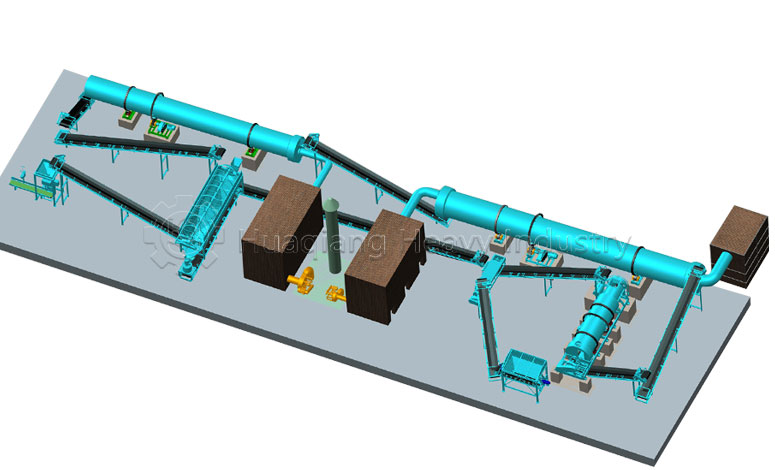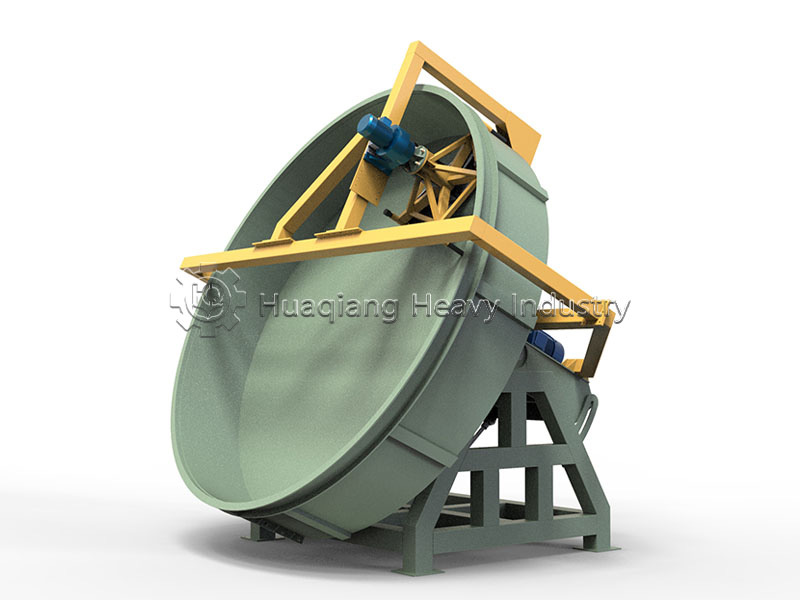
Giant Compost Turners: The Pinnacle of Scale and Efficiency
In the field of composting equipment, large disc-type compost turners represent the peak of engineering technology. Currently, some customized equipment specifications on the market are quite impressive. For example, certain models can achieve a turning span of 30 meters with a turning depth of 1.5-2 meters, meeting the needs of large-scale organic waste processing. In terms of processing efficiency, some internationally renowned brand models can handle over 3,000 cubic meters per hour, providing strong technical support for industrial composting operations.
Tumbling Composters: Ideal for Small-Scale Composting
For home gardening and small farms, tumbling composters demonstrate excellent practical value. These devices complete material mixing through simple rotation operations, significantly reducing the labor intensity of manual turning. Their enclosed design not only effectively controls odors but also prevents wildlife disturbances, maintaining a clean and tidy composting environment.
The core advantage of tumbling composters lies in their efficient fermentation speed. Through special ventilated mixing rod designs inside the barrel and frequent rotation operations, oxygen content can be significantly increased, typically producing mature compost in about 2 months, showing clear efficiency improvements compared to traditional static ground composting methods.
Choosing the Right Turning Tools
Selecting turning tools requires decision-making based on specific composting scales. For small-scale composting scenarios, tumbling composters or simple manual tools like rakes and shovels can meet the needs. For medium to large-scale composting operations, professional compost turning machinery becomes essential.
Professional equipment like crawler-type turners and large disc turners can not only significantly improve work efficiency but also ensure turning uniformity, creating ideal conditions for microbial fermentation, which is crucial for ensuring compost quality and shortening fermentation cycles.
The Important Value of Compost Turners
Compost turners play an irreplaceable role in large-scale aerobic composting processes. Compared to manual turning, mechanical equipment can achieve more uniform turning, ensuring full contact between materials and air, creating suitable living conditions for aerobic microorganisms. This efficient turning operation not only promotes fermentation temperature rise, effectively killing pathogens and weed seeds, but also accelerates moisture dissipation, significantly shortening the entire fermentation cycle.
Detailed Explanation of Various Turning Equipment
Large Disc Turner
Featuring hydraulic lifting design and symmetrical disc structure, with turning width up to 30 meters, energy consumption reduced by 70% compared to traditional equipment, particularly suitable for open-air composting operations in large organic fertilizer plants and sludge treatment facilities.
Chain-Type Turner
Equipped with high-pressure forced oxygen supply system, turning distance up to 10 meters, fermentation cycle only about 1 week, annual processing capacity reaching 10,000-20,000 tons, ideal for livestock manure and straw processing.
Hydraulic Turner
Using crawler walking system and hydraulic lifting device, high degree of automation, capable of effectively breaking up large clumps during fermentation, particularly suitable for operation in wet and soft sites.
Double Spiral Turner
Turning through spiral blades, effective turning height up to 1.7 meters, equipped with PLC control system, capable of multi-tank operation with single machine, providing uniform turning and stable operation.
Conclusion
Whether for small-scale home composting or large-scale industrial production, selecting appropriate turning equipment is a key factor in ensuring composting success. Understanding the characteristics and applicable scenarios of different types of equipment can help users make wiser choices, thereby achieving efficient and environmentally friendly organic waste treatment and resource utilization.
In conclusion, modern composting and fertilizer production represent a sophisticated integration of specialized equipment working in harmony. From initial organic decomposition using large wheel compost turner and chain compost turning machine systems that optimize the organic fertilizer fermentation process, to advanced granulation through disc granulator and rotary drum granulator technology, each machine plays a vital role in the complete organic fertilizer production line. The fermentation composting technology for organic fertilizer ensures efficient breakdown of organic matter, while subsequent processing through drum granulation and double roller press granulator systems transforms compost into premium fertilizers. For comprehensive bio organic fertilizer production line operations, equipment like drum organic fertilizer dryer and various fertilizer granulator machines work alongside windrow machine turners to create complete fertilizer production machine systems. Similarly, npk fertilizer production line configurations utilize specialized roller press granulator production line equipment for the npk fertilizer manufacturing process. These integrated systems, from chain compost turner to final disc granulation production line, demonstrate how proper equipment selection throughout the npk production process ensures optimal results in both organic and synthetic fertilizer manufacturing.







.jpg)


